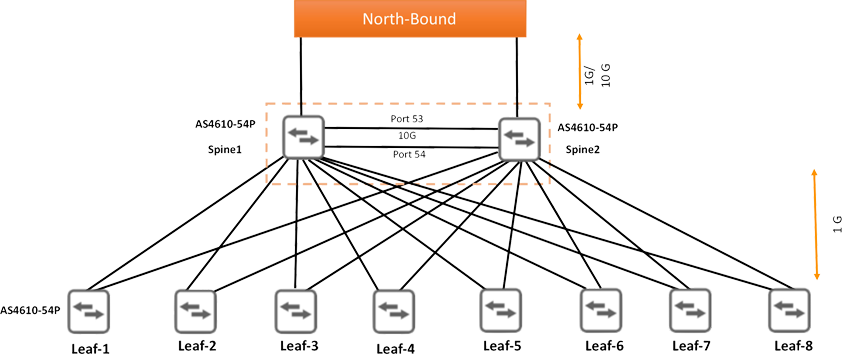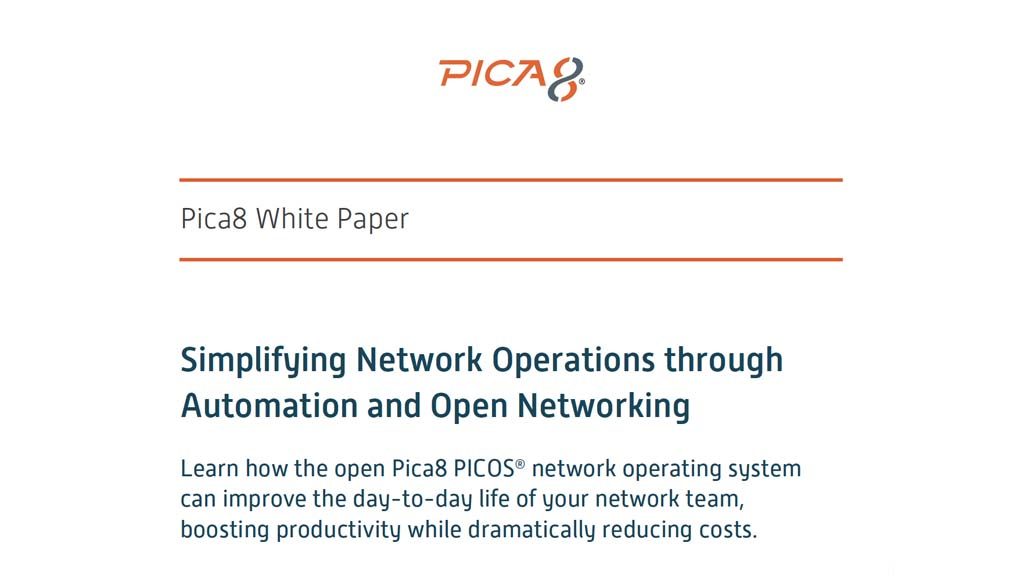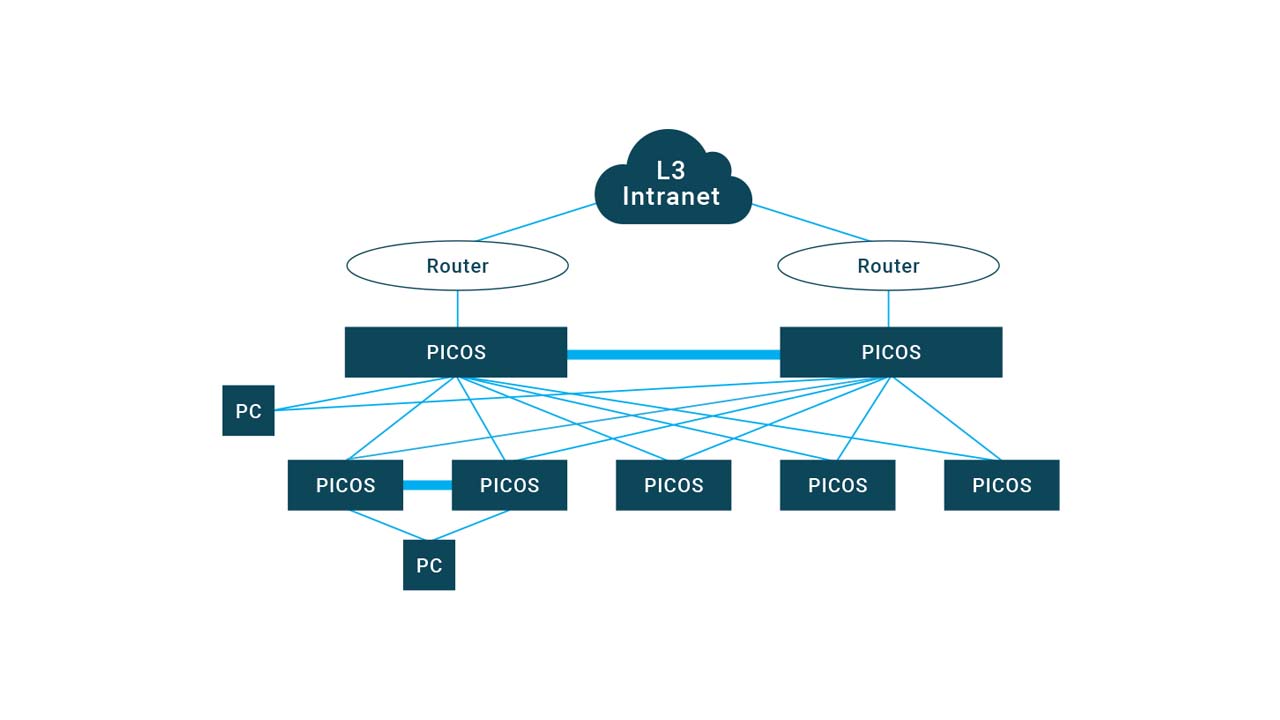In the face of trends such as digital transformation, Internet of Things, Wi-Fi 6 and 5G cellular networks, campus and enterprise edge networking requirements are exploding.
As a result, many enterprises are now staring down a significant decision about their future campus networking and edge computing strategies.
The decision comes down to whether you continue to invest increasingly more dollars with incumbent switch/router vendors or consider a new path: networks built with generic switches. Flexible networks bring lower up-front capital costs as well as lower ongoing operational costs, thanks to simplified campus network architectures and inexpensive automation tools that significantly ease deployment on on-going network management.
Big action at the campus network edge
By 2024, the edge computing market is expected to be valued at $6.96 billion, up from $1.27 billion in 2018 – a compound annual growth rate of 34%. The growth is driven by the confluence of Internet of Things (IoT) applications, artificial intelligence, machine learning and other applications that require both significant processing power and low latency – hence the need for localized compute and storage resources.
IoT, in particular, is behind much of the data growth at the network edge. A Forrester Consulting study commissioned by Dell Technologies and VMware found cloud-based approaches can’t effectively deal with the amount of data being generated at the edge, so companies are adopting a decentralized strategy. Among the top reasons for adopting an edge-based approach were:
- The amount of data generated at the edge is growing at an exponential rate – cited by 55% of respondents
- Analyzing some IoT data at the edge is more secure than transporting all data over a network – 54%
- It’s more cost-effective to process some data at the edge than to send all data to a data center/cloud – 49%
- Many uses cases cannot tolerate the latency inherent in sending data over a network and back – 46%
- Data compliance and regulatory concerns – 46%
At the same time, Wi-Fi 6 and 5G both promise network capacities that far exceed their predecessors. In a campus network, much of that wireless traffic will at some point hit an edge network switch.
Download our latest White Paper:
An Approach to Intent-Based Networking
Edge switch upgrade challenges
The net result of these trends is more traffic at the edge, centered on campus networks at switches closest to end users. Companies are being forced to upgrade hundreds – sometimes thousands – of campus edge switches to accommodate the increase in traffic and to rethink their edge computing architectures.
That certainly presents some problems. For one, most companies don’t have enough experienced network engineers and technicians available to install, configure and manage all those new switches. Second, it’s an expensive proposition to buy dozens or hundreds of edge switches from incumbent vendors.
Defining the traditional campus network
But this edge onslaught also presents an opportunity: a chance to rethink enterprise campus network topology, and the types of switches you use to build campus networks.
Let’s take a look at what campus networks are, and how they’ve traditionally been built.
Campus networks, or campus-area networks (CANs), comprise two or more connected local-area networks (LANs), such as on a school campus, corporate campus consisting of a group of buildings, or a military base.
A campus network is typically smaller than a metropolitan-area network (MAN) or wide-area network (WAN). But a CAN uses many of the same network technologies as MANs and WANs, including high-speed routers and/or switches that form a high-speed network.
In fact, campus networks usually feature the highest speeds of any portion of the enterprise network, from 1G to 100G bps.
Part of the beauty of CANs is that different portions of the network can be configured to serve different requirements. A portion serving an enterprise dev/test environment or university research lab may require high-speed links, while another serving administrative offices requires more modest capacity.
Rethinking enterprise campus network architectures
Traditionally, a campus-area network topology used the same three-tier model common in client-server networks. The bottom tier, the access layer, comprises switches that support end-user devices. Access layer switches feed up into switches comprising the aggregation layer, also known as the distribution layer. At the top is the core layer, where high-speed routers supply network connections and routing services among LANs and to locations outside the CAN.
While that campus topology has served us well for decades, some enterprises are taking a page from data center networks and employing a leaf-spine architecture in their campus networks. Leaf-spine is popular in data center networks because it brings a number of benefits. It reduces the number of “hops” between any two devices, thus reducing latency and making networks easier to manage. It’s a relatively simple architecture to deploy in a data center because the switches are close to one another, even in the same rack.

In a leaf-spine network, any given node is only one hop away from any other, resulting in high performance, low latency and simplified management.
Today it’s possible to deploy the leaf-spine architecture in a campus network design and get the same benefits in terms of performance and management.
Pica8’s PICOS network operating system, for example, enables the leaf-spine architecture to be used in campus networks as well as larger enterprise networks. In addition to improving performance and redundancy, Pica8 technology also enables dozens of switches to appear as a single switch with a single IP address. That makes campus networks far easier to manage, such as by providing the ability to deploy software updates to numerous switches with a single command. Such features help to lower ongoing operating costs.
Automation in campus networks
Network automation also helps to lower management costs in campus networks. Once automation meant shelling out hundreds of thousands of dollars for the likes of Cisco DNA Center. Today, HPC, data center, and enterprise networks present a viable alternative.
Some source frameworks such as Ansible enable automation in flexible networks. Many Ansible “playbooks” are available containing predefined scripts to automate common management tasks in enterprise networks, making it relatively simple for any IT personnel to implement automation – at little to no cost.
Vendors are also building on the Ansible framework, including Pica8 with its AmpCon™ automation framework.
AmpCon automates the job of network device provisioning, configuration, testing and management, including bringing zero-touch provisioning to the world of flexible networks. Such capabilities enable the same number of administrators to deal with larger networks – a key requirement when dealing with the explosion of traffic in campus networks and at the network edge.
Meeting the campus network challenge
You can meet the challenge that the burgeoning amounts of data on campus networks presents, and you don’t have to break the bank to do it. HPC, data center, and enterprise networking offers a viable alternative to the legacy vendors, along with automation and network configuration options that make them easier to manage. With PICOS, Pica8 has also stripped out much of the complexity that’s been built into legacy NOSs over the years – there’s no bloat here.
Learn how the Pica8 PICOS® network operating system can improve the day-to-day life of your network team, boosting productivity while dramatically reducing costs.
Learn how a school district with 60,000+ network users and 115 schools implemented a flexible network that achieved at least 85% feature parity with legacy offerings while gaining “control without complexity.”
Threshold™ is Pica8’s end-to-end networking solution capable of replacing entire legacy-vendor enterprise networks of any size with centrally managed, modern, disaggregated brite box-based alternatives.


